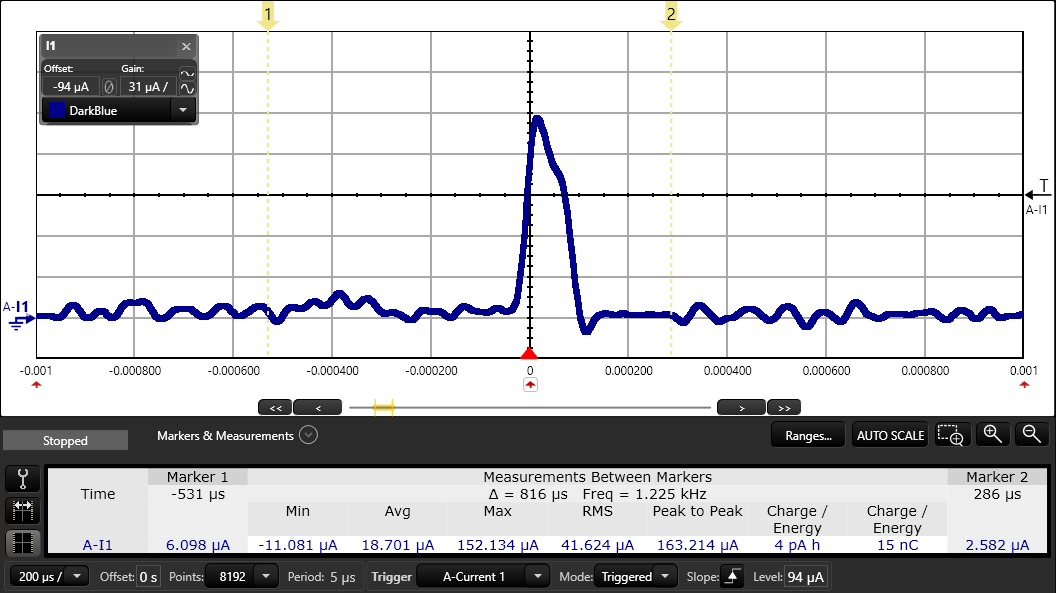SWRA578B October 2017 – April 2020 CC1312PSIP , CC1312R , CC1314R10 , CC1352P , CC1352P7 , CC1352R , CC2620 , CC2630 , CC2640 , CC2640R2F-Q1 , CC2642R , CC2642R-Q1 , CC2650MODA , CC2652P , CC2652R , CC2652R7 , CC2652RB , CC2652RSIP
3.1.6 SPI Accelerometer
The BOOSTXL-UPLSENSE comes with a ultra-low power accelerometer. This sensor uses the serial peripheral interface (SPI) interface to communicate with the Sensor Controller. In the SPI accelerometer example, the device is kept at a steady state. The accelerometer will report to the Sensor Controller with a frequency of 100 Hz. If a change in the accelerometer over a certain threshold is detected, the Sensor Controller will wake up the system CPU and the System CPU will light up one of two LEDs.
| Average Current Consumption | Unit | |
|---|---|---|
| SPI Accelerometer stationary (100 Hz) | 5.4 | µA |
 Figure 11. SPI Accelerometer: One Accelerometer Measurement
Figure 11. SPI Accelerometer: One Accelerometer Measurement